Microstructure Evolution in High Purity Aluminum Single Crystal Processed by Equal Channel Angular Pressing (ECAP)
Abstract
:1. Introduction
2. Experiment
3. Results and Discussion
4. Conclusions
Acknowledgments
Author Contributions
Conflicts of Interest
References
- Yamada, K.; Iwasaki, H.; Ide, Y.; Harigaya, M.; Kageyama, Y.; Deguchi, H.; Hayashi, Y. Sputtering Target, Method of Producing the Target, Optical Recording Medium Fabricated by Using the Sputtering Target, and Method of Fabricating the Optical Recording Medium. U.S. Patent 6,280,684, 2001. [Google Scholar]
- Mishin, O.V.; Bowen, J.R.; Lathabai, S. Quantification of microstructure refinement in aluminium deformed by equal channel angular extrusion: Route A vs. route Bc in a 90 die. Scr. Mater. 2010, 63, 20–23. [Google Scholar] [CrossRef]
- Watanabe, H.; Somekawa, H.; Higashi, K. Fine-grain processing by equal channel angular extrusion of rapidly quenched bulk Mg-Y-Zn alloy. J. Mater. Sci. 2005, 20, 93–101. [Google Scholar] [CrossRef]
- Hoseini, M.; Meratian, M.; Toroghinejad, M.R.; Szpunar, J.A. The role of grain orientation in microstructure evolution of pure aluminum processed by equal channel angular pressing. Mater. Charact. 2010, 61, 1371–1378. [Google Scholar] [CrossRef]
- Oh-Ishi, K.; Horita, Z.; Smith, D.J.; Langdon, T.G. Grain boundary structure in Al-Mg and Al-Mg-Sc alloys after equal-channel angular pressing. J. Mater. Sci. 2001, 16, 583–589. [Google Scholar] [CrossRef]
- Ma, A.; Zhu, C.; Chen, J.; Jiang, J.; Song, D.; Ni, S.; He, Q. Grain refinement and high-performance of equal-channel angular pressed Cu-Mg alloy for electrical contact wire. Metals 2014, 4, 586–596. [Google Scholar] [CrossRef]
- Rifai, M.; Miyamoto, H.; Fujiwara, H. Effect of ECAP deformation route on the degree of anisotropy of microstructure of extremely low CN Fe-20mass%Cr alloy. Metals 2014, 4, 55–63. [Google Scholar] [CrossRef]
- Valiev, R.Z.; Langdon, T.G. Principles of equal-channel angular pressing as a processing tool for grain refinement. Prog. Mater. Sci. 2006, 51, 881–981. [Google Scholar] [CrossRef]
- Huot, J.; Skryabina, N.Y.; Fruchart, D. Application of severe plastic deformation techniques to magnesium for enhanced hydrogen sorption properties. Metals 2012, 2, 329–343. [Google Scholar] [CrossRef]
- Zhilyaev, A.P.; Oh-Ishi, K.; Raab, G.I.; McNelley, T.R. Influence of ECAP processing parameters on texture and microstructure of commercially pure aluminum. Mater. Sci. Eng. A 2006, 441, 245–252. [Google Scholar] [CrossRef]
- Sun, L.; Muszka, K.; Wynne, B.P.; Palmiere, E.J. The effect of strain path reversal on high-angle boundary formation by grain subdivision in amodel austenitic steel. Scr. Mater. 2011, 64, 280–283. [Google Scholar] [CrossRef]
- Chakkingal, U.; Suriadi, A.B.; Thomson, P.F. The development of microstructure and the influence of processing route during equal channel angular drawing of pure aluminum. Mater. Sci. Eng. A 1999, 266, 241–249. [Google Scholar] [CrossRef]
- Köhler, L.; Hockauf, K.; Lampke, T. Influence of particulate reinforcement and equal-channel angular pressing on fatigue crack growth of an aluminum alloy. Metals 2015, 5, 790–801. [Google Scholar] [CrossRef]
- Málek, P.; Šlapáková Poková, M.; Cieslar, M. High temperature deformation of twin-roll cast Al-Mn-based alloys after equal channel angular pressing. Materials 2015, 8, 7650–7662. [Google Scholar] [CrossRef]
- Murashkin, M.; Medvedev, A.; Kazykhanov, V.; Krokhin, A.; Raab, G.; Enikeev, N.; Valiev, R.Z. Enhanced mechanical properties and electrical conductivity in ultrafine-grained Al 6101 alloy processed via ECAP-conform. Metals 2015, 5, 2148–2164. [Google Scholar] [CrossRef]
- Furukawa, M.; Kawasaki, Y.; Miyahara, Y.; Horita, Z.; Langdon, T.G. An investigation of the deformation process during equal-channel angular pressing of an aluminum single crystal. Mater. Sci. Eng. A 2015, 410, 194–200. [Google Scholar] [CrossRef]
- Fukuda, Y.; Oh-ishi, K.; Furukawa, M.; Horita, Z.; Langdon, T.G. The application of equal-channel angular pressing to an aluminum single crystal. Acta Mater. 2004, 52, 1387–1395. [Google Scholar] [CrossRef]
- Fukuda, Y.; Oh-ishi, K.; Furukawa, M.; Horita, Z.; Langdon, T.G. Influence of crystal orientation on ECAP of aluminum single crystals. Mater. Sci. Eng. A 2006, 420, 79–86. [Google Scholar] [CrossRef]
- Segal, V.M. Materials processing by simple shear. Mater. Sci. Eng. A 1995, 197, 157–164. [Google Scholar] [CrossRef]
- Furuno, K.; Akamatsu, H.; Oh-ishi, K.; Furukawa, M.; Horita, Z.; Langdon, T.G. Microstructural development in equal-channel angular pressing using a 60 die. Acta Mater. 2004, 52, 2497–2507. [Google Scholar] [CrossRef]
- Langdon, T.G. The principles of grain refinement in equal-channel angular pressing. Mater. Sci. Eng. A 2007, 462, 3–11. [Google Scholar] [CrossRef]
- Prangnell, P.B.; Gholinia, A.; Markushev, M.V. Investigations and Applications of Severe Plastic Deformation; Lowe, T.C., Valiev, R.Z., Eds.; Kluwer Academic Publishers: Dordrecht, The Netherlands, 2000; pp. 65–71. [Google Scholar]
- Dong, J.F.; Dong, Q.; Dai, Y.B.; Xing, H.; Han, Y.F.; Ma, J.B.; Zhang, J.; Wang, J.; Sun, B.D. Study on structure homogeneity of plate sample with large dimension during equal channel angular pressing (ECAP). J. Mater. Res. 2016, 31, 3420–3427. [Google Scholar] [CrossRef]
- Doherty, R.D.; Hughes, D.A.; Humphreys, F.J.; Jonas, J.J.; Jensen, D.J.; Kassner, M.E.; Rollett, A.D. Current issues in recrystallization: A review. Mater. Sci. Eng. A 1997, 238, 219–274. [Google Scholar] [CrossRef]
- Montheillet, F.; Le Coze, J. Influence of purity on the dynamic recrystallization of metals and alloys. Phys. Status Solidi A 2002, 189, 51–58. [Google Scholar] [CrossRef]
- Hughes, D.A.; Hansen, N. High angle boundaries formed by grain subdivision mechanisms. Acta Mater. 1997, 45, 3871–3886. [Google Scholar] [CrossRef]
- Margulies, L.; Winther, G.; Poulsen, H.F. In situ measurement of grain rotation during deformation of polycrystals. Science 2001, 291, 2392–2394. [Google Scholar] [CrossRef] [PubMed]
- Iwahashi, Y.; Horita, Z.; Nemoto, M.; Langdon, T.G. Factors influencing the equilibrium grain size in equal-channel angular pressing: Role of Mg additions to aluminum. Metall. Mater. Trans. A 1998, 29, 2503–2510. [Google Scholar] [CrossRef]
- Kawasaki, M.; Horita, Z.; Langdon, T.G. Microstructural evolution in high purity aluminum processed by ECAP. Mater. Sci. Eng. A 2009, 524, 143–150. [Google Scholar] [CrossRef]
- El-Danaf, E.A. Mechanical properties and microstructure evolution of 1050 aluminum severely deformed by ECAP to 16 passes. Mater. Sci. Eng. A 2008, 487, 189–200. [Google Scholar] [CrossRef]
- Salem, A.A.; Langdon, T.G.; McNelley, T.R.; Kalidindi, S.R.; Semiatin, S.L. Strain-path effects on the evolution of microstructure and texture during the severe-plastic deformation of aluminum. Metall. Mater. Trans. A 2006, 37, 2879–2891. [Google Scholar] [CrossRef]
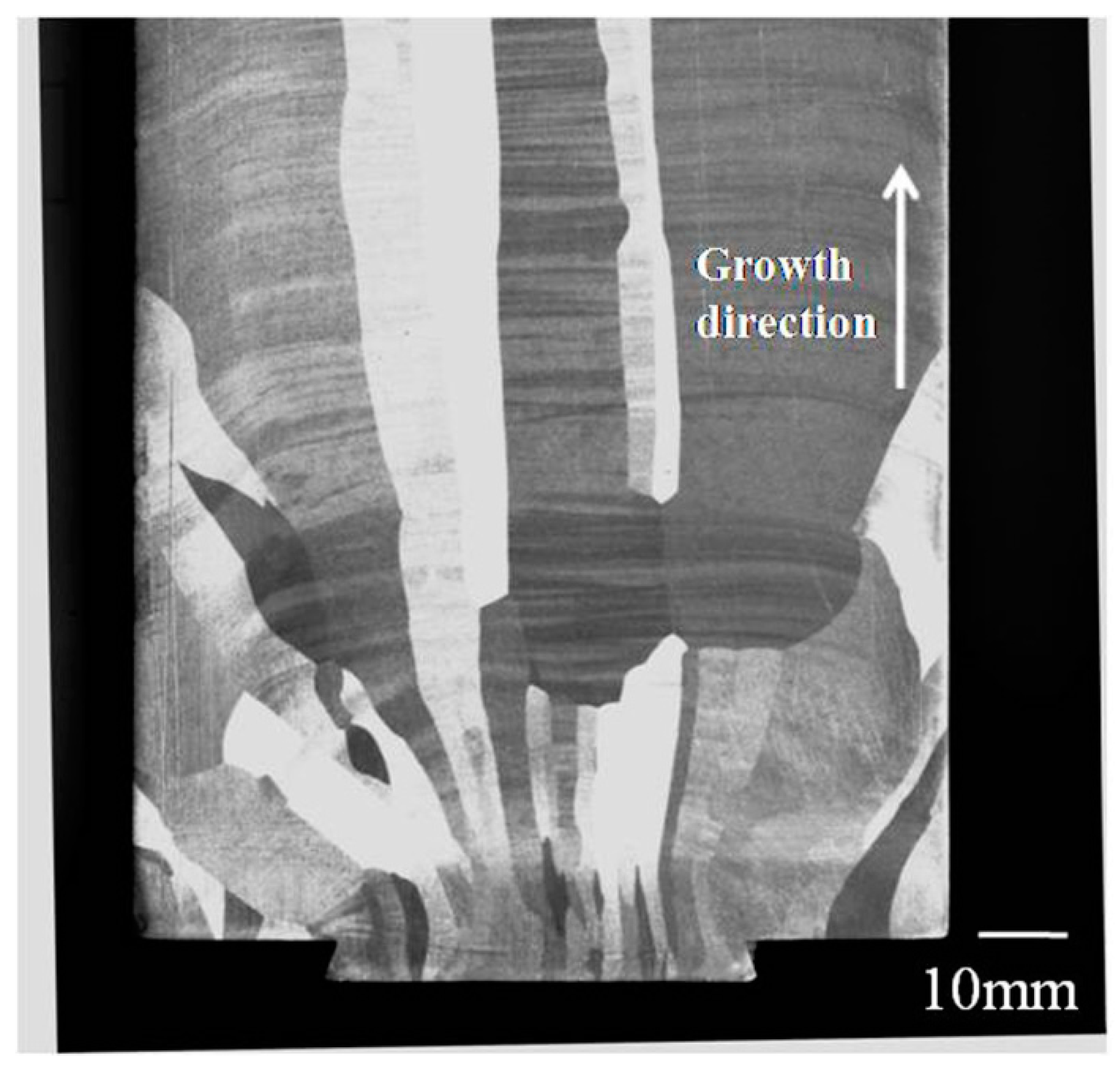
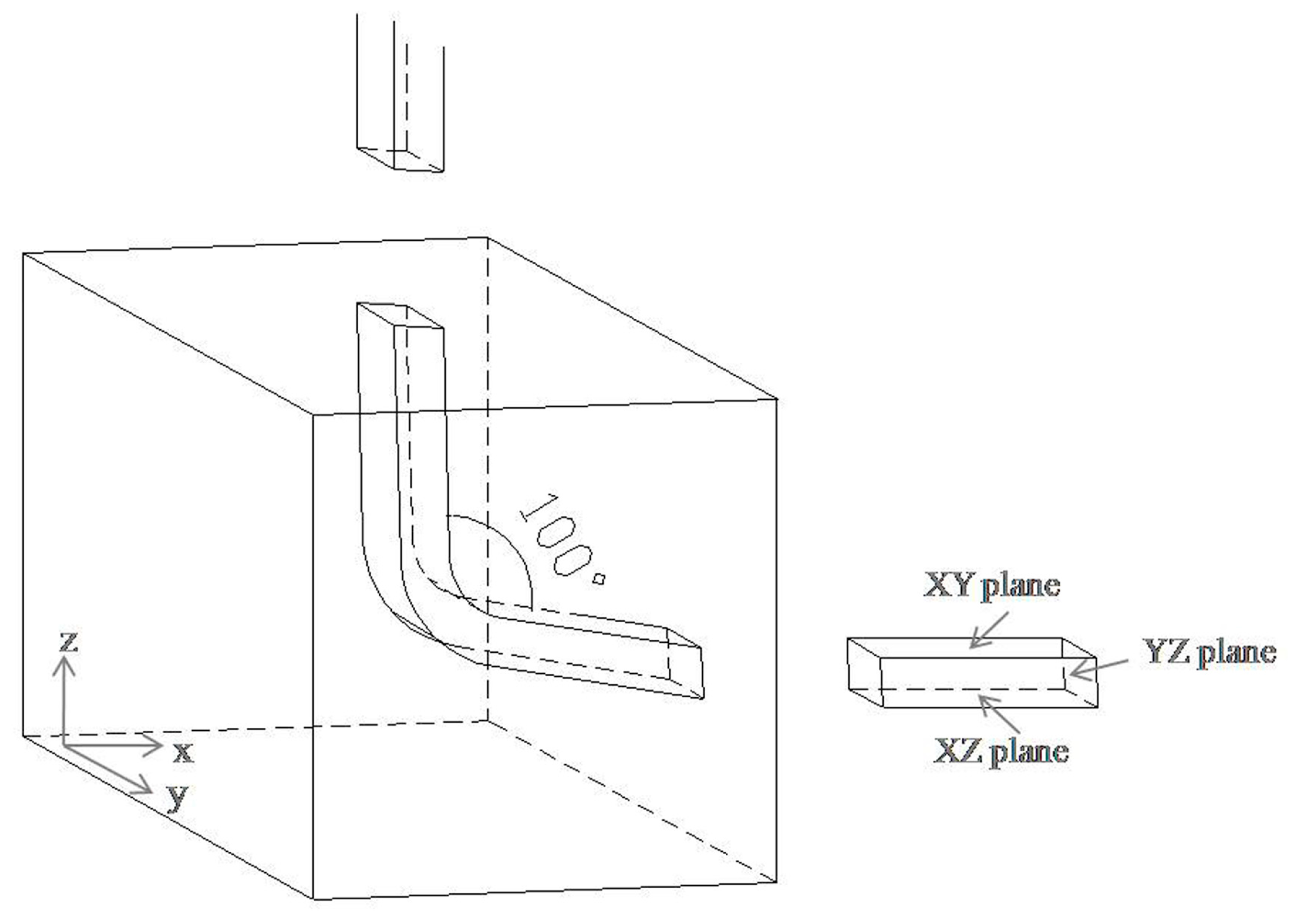
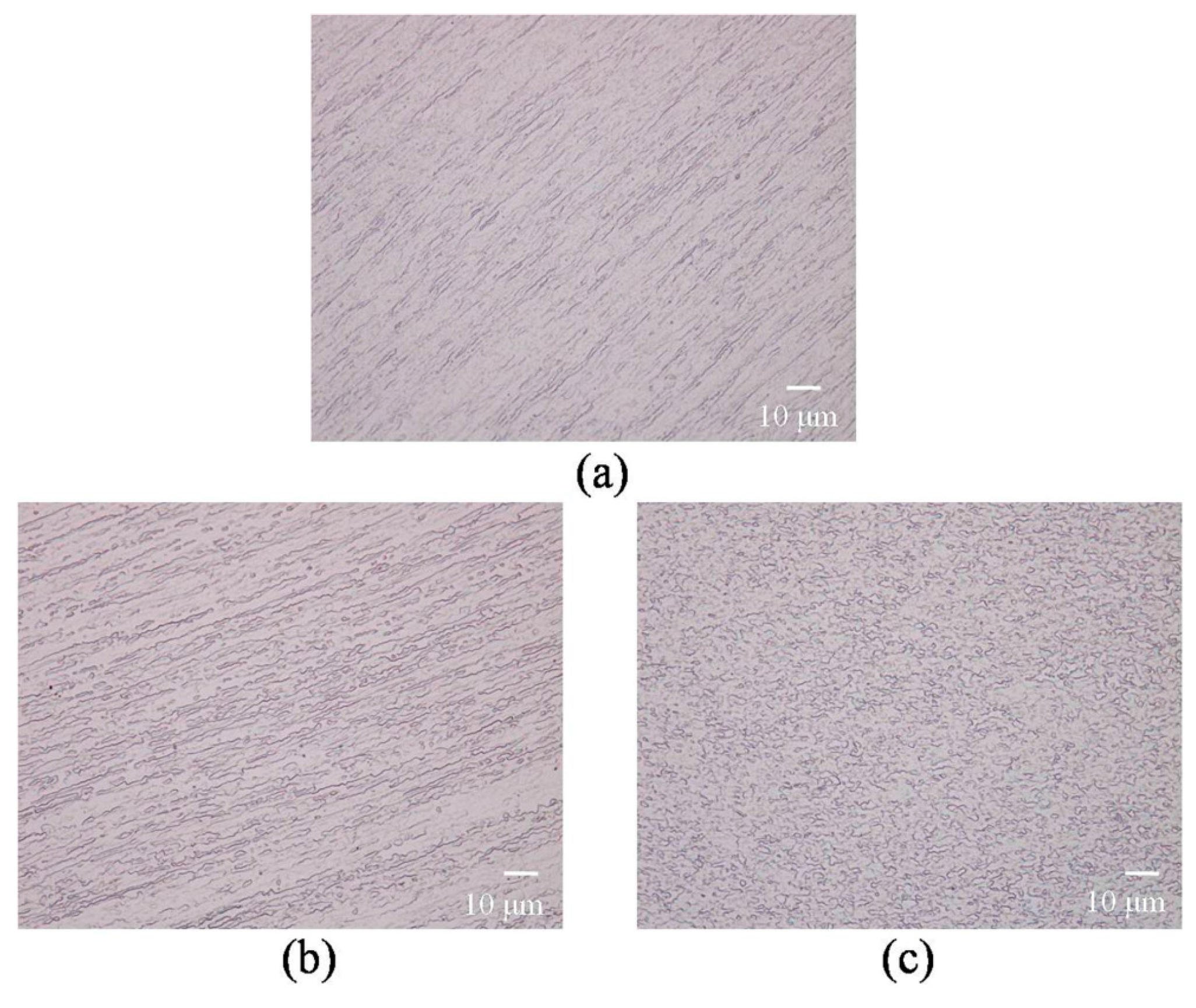
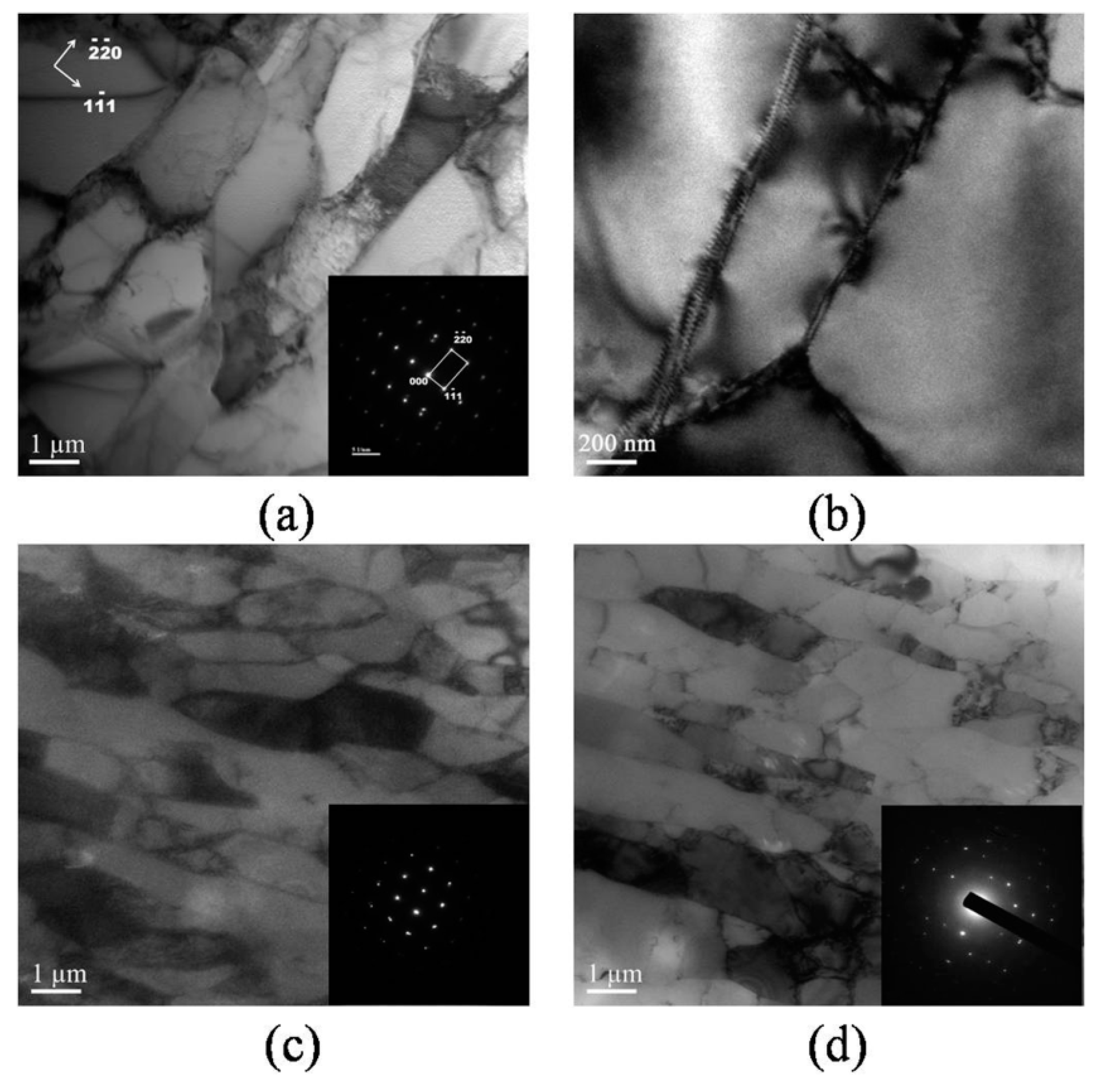


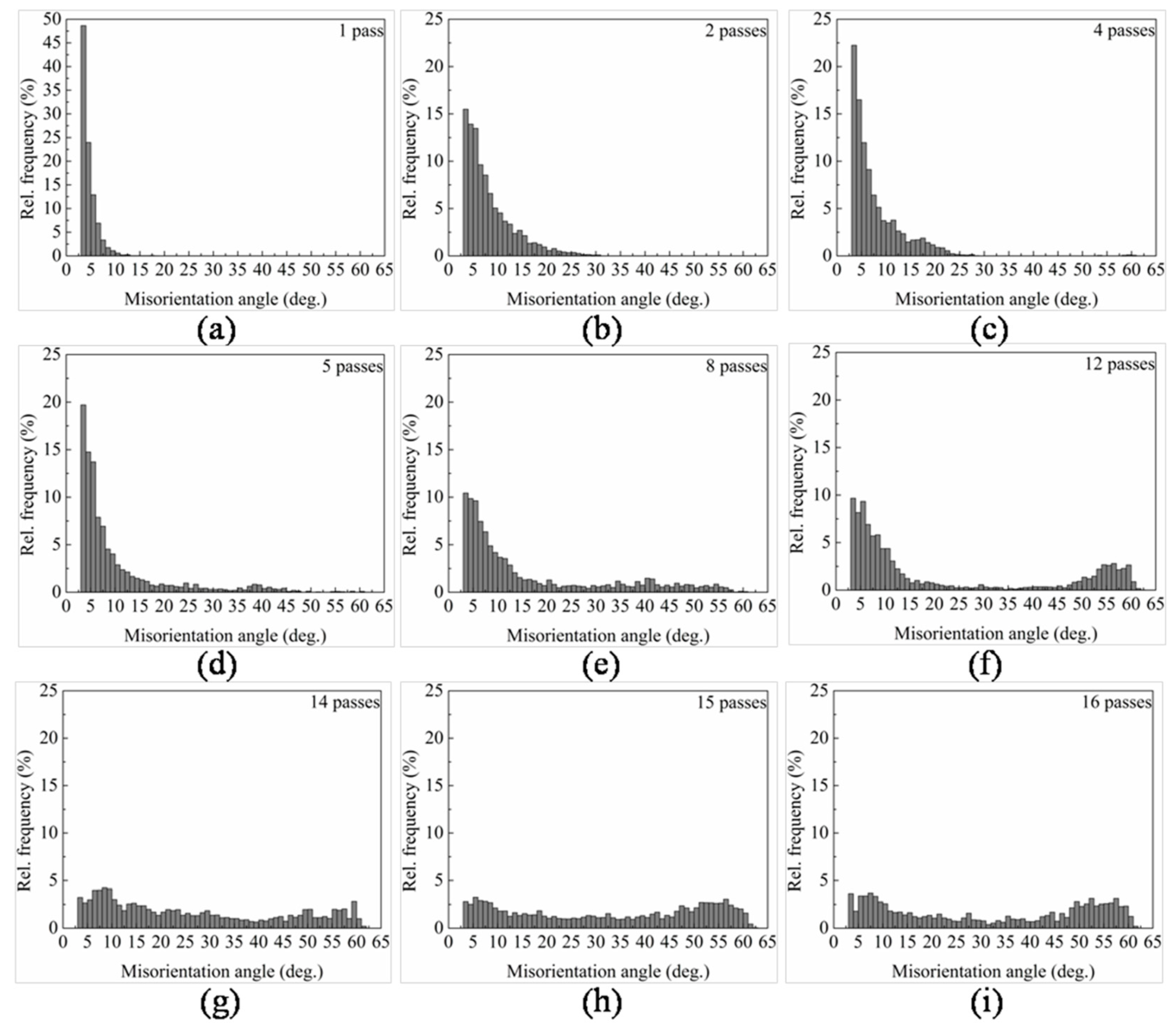
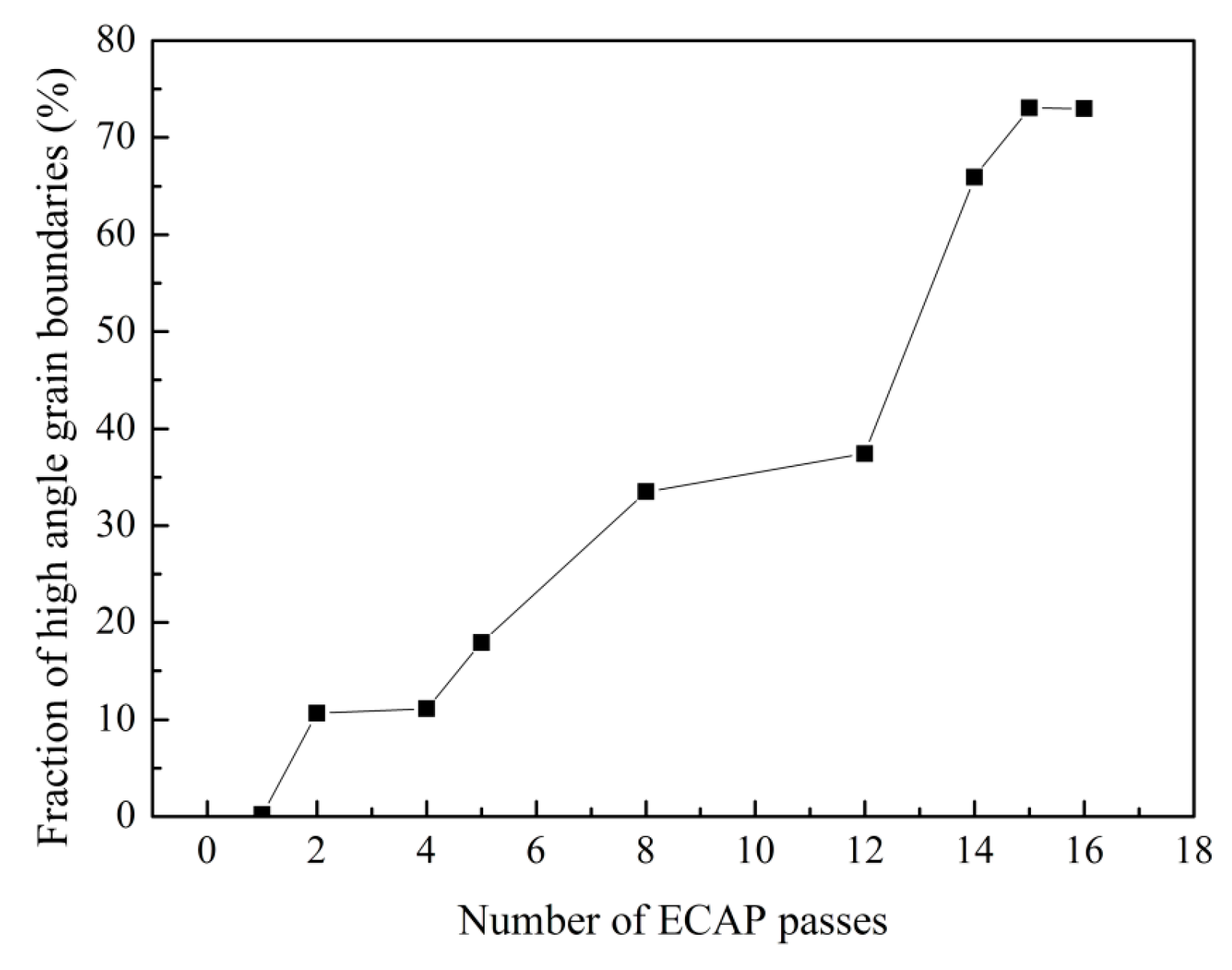
© 2017 by the authors. Licensee MDPI, Basel, Switzerland. This article is an open access article distributed under the terms and conditions of the Creative Commons Attribution (CC BY) license ( http://creativecommons.org/licenses/by/4.0/).
Share and Cite
Dong, J.; Dong, Q.; Dai, Y.; Xing, H.; Han, Y.; Ma, J.; Zhang, J.; Wang, J.; Sun, B. Microstructure Evolution in High Purity Aluminum Single Crystal Processed by Equal Channel Angular Pressing (ECAP). Materials 2017, 10, 87. https://doi.org/10.3390/ma10010087
Dong J, Dong Q, Dai Y, Xing H, Han Y, Ma J, Zhang J, Wang J, Sun B. Microstructure Evolution in High Purity Aluminum Single Crystal Processed by Equal Channel Angular Pressing (ECAP). Materials. 2017; 10(1):87. https://doi.org/10.3390/ma10010087
Chicago/Turabian StyleDong, Jinfang, Qing Dong, Yongbing Dai, Hui Xing, Yanfeng Han, Jianbo Ma, Jiao Zhang, Jun Wang, and Baode Sun. 2017. "Microstructure Evolution in High Purity Aluminum Single Crystal Processed by Equal Channel Angular Pressing (ECAP)" Materials 10, no. 1: 87. https://doi.org/10.3390/ma10010087




